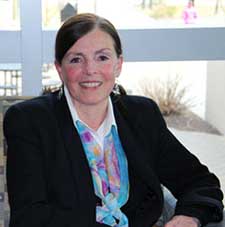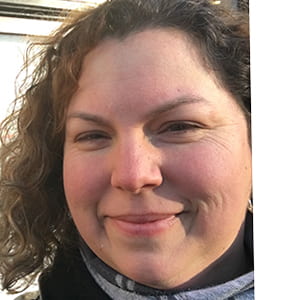SESW Elementary and Special Education Faculty in the Spotlight: Susan Skawinski and LoriAnn Dunn
How did the idea to offer a practicum partnership opportunity for students with Native American teachers across the country come to fruition?
Elementary/ Special Education practicum experiences are typically held in local schools where students provide face-to-face instruction and support each week. When Providence College’s response to the pandemic required all practicum field experiences to be remote in the fall, we recognized an opportunity for our preservice teachers to learn from students who were Native American and from teachers in schools that taught curricula grounded in Native American cultures and language learning. Native Americans represent groups of individuals with unique and rich cultures and histories. Because there is a very small number of Native American students in Rhode Island and Massachusetts public schools, our students have not had many experiences to acquire skills and knowledge about teaching them. We wanted to prepare our preservice teachers to be culturally responsive and aware of all learners who are diverse and we decided to stretch our thinking about the possibilities.
What was the planning process like for creating these partnerships?
The planning and organization of this experience was very different from our usual process of finding practicum placements. We began with very little knowledge about where to look. We wanted to find schools where the majority of students were Native American so that Native American cultures were a part of students’ education. We spent time researching educational connections and organizations that might help us identify these schools. One connection we made was with Dr. Casie Wise at the National Indian Education Association in Washington, DC. The NIEA is the only national non-profit educational organization that focuses solely on the educational issues for American Indian, Alaska Native, and Native Hawaiian people in the United States. Dr. Wise was interested in helping us create partnerships with schools, but this was a new activity for the organization. She contacted schools across the country asking for semester-long placements for our EDU 331 students.
What partnerships have you created thus far?
- Dulce Elementary School in New Mexico
- Indian Community School in Wisconsin
- McAlester Public School in Oklahoma
- Native American Community Academy in New Mexico
Finding practicum placements for our students always has some challenges. For this semester, our starting point was finding someone who could guide us in identifying schools and who could serve as a “bridge” between our program and teachers. We searched for professional literature and organizations that described educational work with Native Americans. After sending a few emails with no response, we connected with Dr. Wise at NIEA. The idea of placing pre-service teachers in field experiences was a new concept to the organization, but Dr. Wise and the organization’s executive director, Diana Cournoyer, were enthusiastic about the possibilities. Of course, one other challenge in this work was developing ways to effectively teach online. Our students worked very hard at finding ways to create motivating instruction.
How did the Engaged Learning Grant help you implement your plans.
While NIEA had not previously done work with teacher preparation programs, it has, as part of its mission, a commitment to helping in-service teachers work more effectively with students who are Native American. A major part of this effort is a comprehensive professional development program that educates participants about Native American history, particularly historical trauma, and cultures. In order for our students to work in schools, we (Susan, Lori, and our students) needed to participate in this professional development series. The money from the Center for Engaged Learning grant was used to cover the cost of the NIEA professional development sessions.
What do you hope students are able to take away from this experience?
All our ESE field experiences require students to plan and implement instruction and this experience was no exception. Our students were required to work with classroom teachers to develop and implement lesson plans that focused on literacy and social studies. They began by observing teachers and learning from them about culturally sustaining pedagogy. And they collaborated with their practicum partners and teachers in engaging with Native American students.
What are you most excited about in terms of this experience?
This experience allowed us to learn so much about the histories of Native American groups, their perspectives about education, their rich cultures, the ideals they value, and their languages that are being revitalized, especially in schools. We learned that each Native American group is unique. We also learned that students in public schools need to have more complete and accurate knowledge about past and present Native American experiences.







